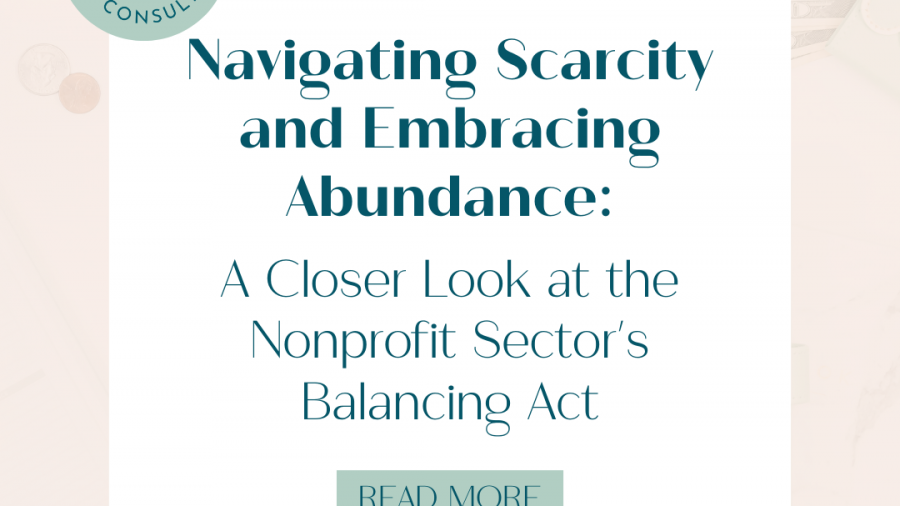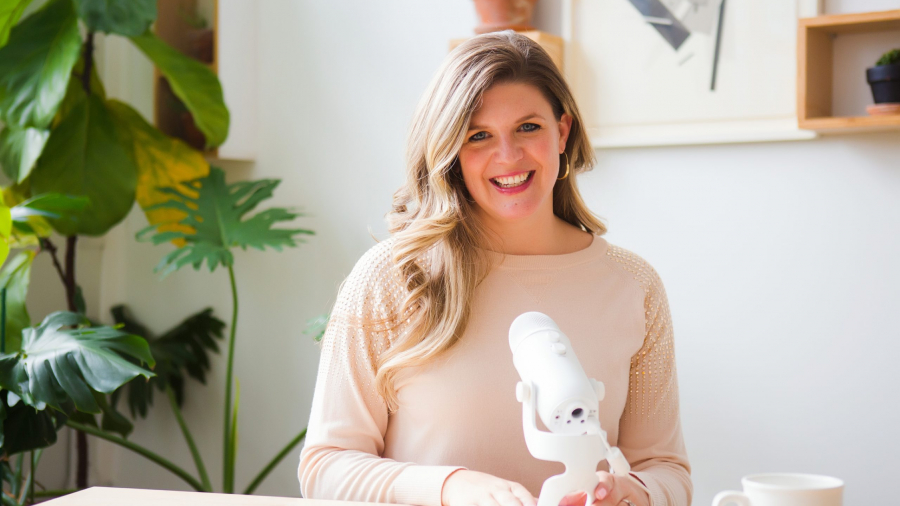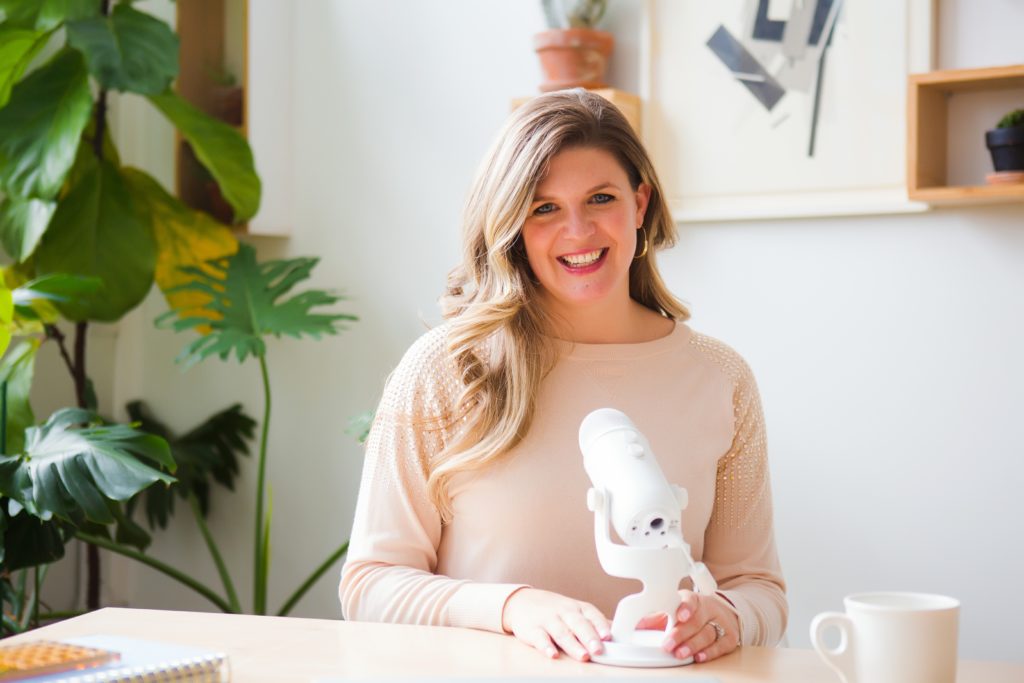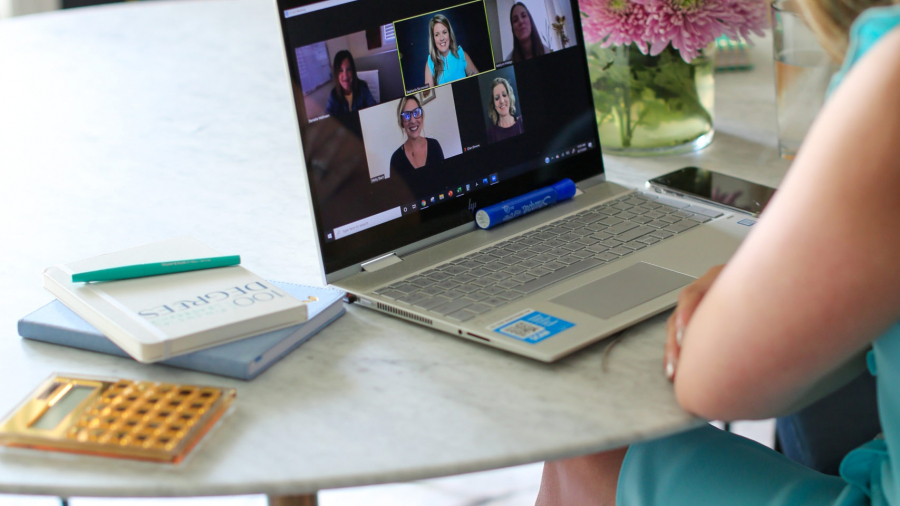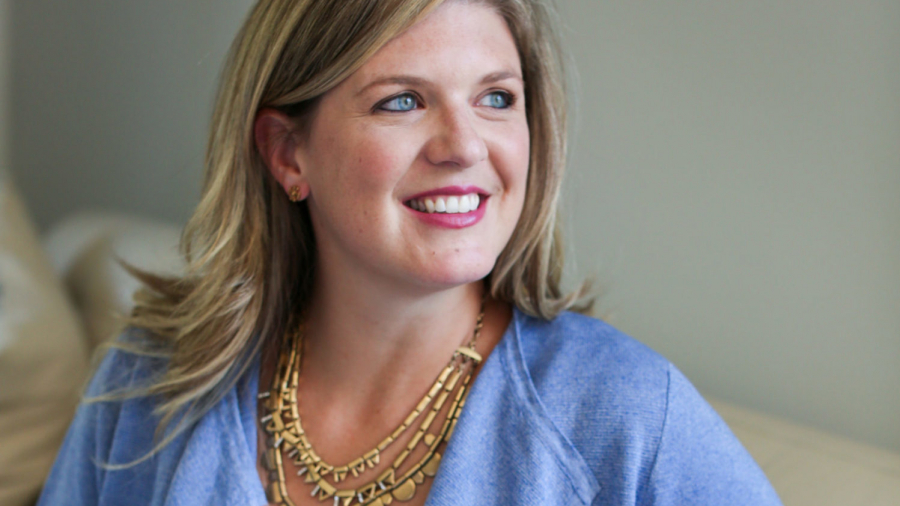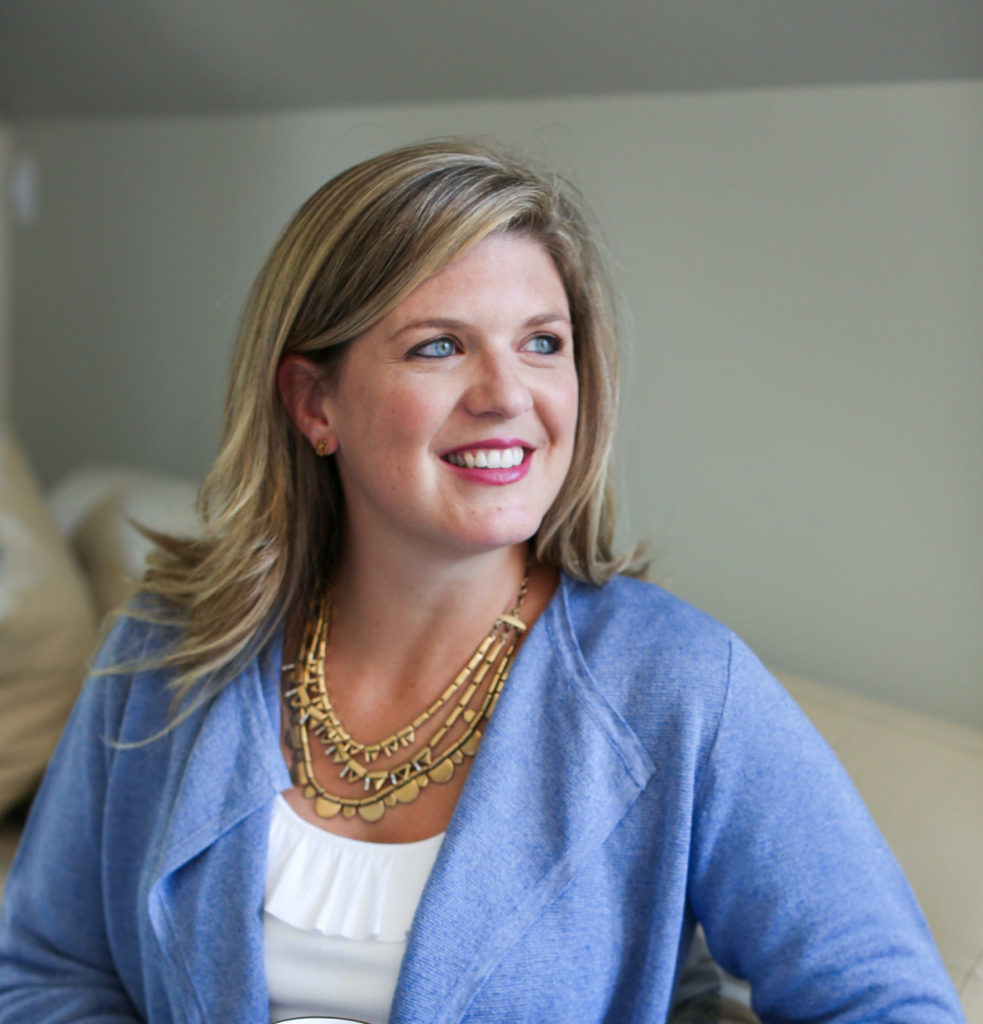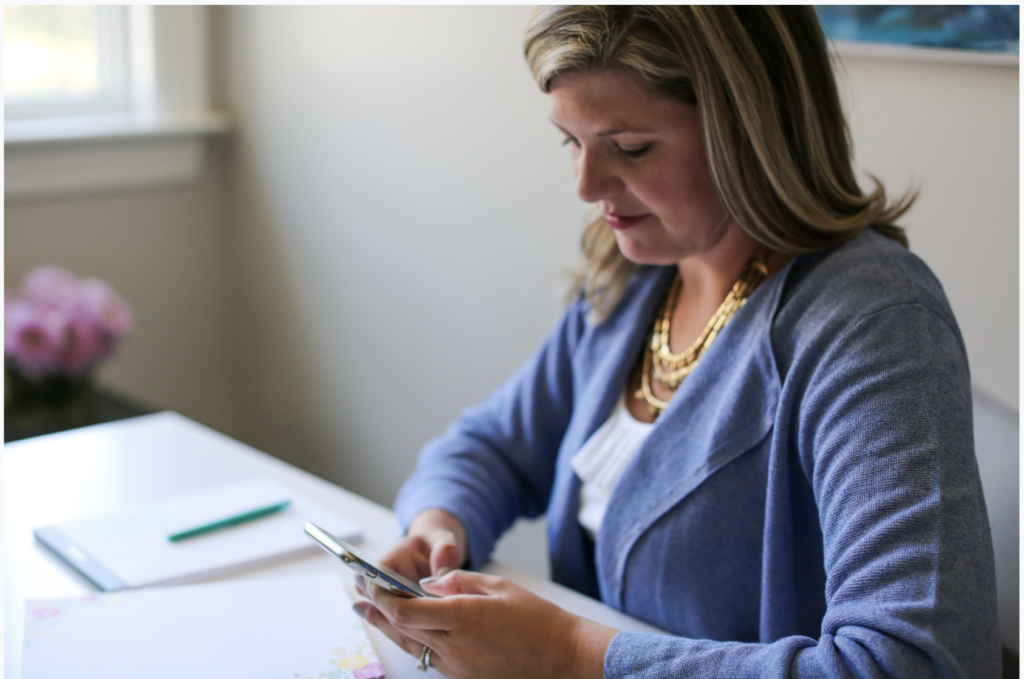If we were having coffee together today (well, tea for me!), I’d tell you that I’m training to run a marathon right now. It’s my first road race of any sort in nearly a decade – I completed 7 marathons in my 20s and replaced running with multiple IVF treatments, 2 pregnancies, 2 births, raising two little girls, and building a business
My Second Grade Failure
When I was in second grade, I memorized all fifty states, in alphabetical order in a day, thanks to the catchy song, Fifty Nifty United States. #iykyk
Because I was an 8-year-old overachiever, I boasted to my teacher that I would also memorize all (at that time) 41 presidents in order and that I would recite them to her the next day, giving me roughly 18 hours to accomplish my self-imposed challenge
How to Build Good Money Habits That Stick
I get asked this question a lot… “Stephanie, how do you make good money habits stick?”
The truth is, our brain cannot differentiate a good habit from a bad one, and this is why it’s hard to break long-standing habits.
For example, if you’ve been so used to NOT doing your books until the last minute, then chances are you’re going to keep repeating this same pattern.
But this is not to say that we have to stay stuck in this cycle and put up with habits that no longer serve us!
As with anything you want to change, the first step is to acknowledge your patterns, and understand where they come from. Once you understand the root of your pattern, you can start shifting to something else that works better for you.
So if you’re someone who’s not a huge fan of math or numbers, think about when did this feeling first show up? What created it? And then let that guide you to create a new money mindset for yourself.
Here are some helpful tips on how to break old habits and develop good money habits instead:
-
Make them easy
Something that is difficult to achieve rarely sticks. The best way to create a habit? Decide how you want to feel and take steps towards getting there, little by little. It doesn’t have to be a huge lifestyle overhaul.
Everything doesn’t need to get done immediately. Focus on ease and start with one, manageable step at a time, like just coding your transactions in QuickBooks once a week. Even the smallest of good habits will make you feel good when it’s done!
-
Reward yourself
Rewards are awesome for reinforcing new habits! Try giving yourself a small reward for your efforts each day – maybe take yourself out for a nice meal after crushing your to-do list, or give yourself an hour to read in the evening when you’ve finished your day’s work.
Make that reward enticing enough to get you through the initial hard work – like including that course you’ve been eyeing in your financial plan for the year!
-
Turn your goals into habits
The secret to achieving goals is assimilating them into your routine, that way it’s easier to break down that big goal into little steps, and you can create momentum more sustainably.
For example:
- Intentionally go for a walk every day after work – it’s something your brain will automatically make you want to do, instead of making you feel guilty about not exercising.
- If your goal is to be more intentional with your spending, set a reminder in your calendar to check your bank balance each morning before you open your email.
-
Buddy up
The best way to reinforce good habits is by surrounding yourself with other people who will hold you accountable for your new behaviors. This means people who likely already emulate the behavior you are trying to form. (Ahem, we have just the solution for you in the Purpose & Profit Collective!)
You see, our brains are not thrilled when we suddenly change things – it’s the same with the people around you. If they are not ready or not fully supportive of the change you’re making, they may inadvertently sabotage your attempts at sticking to your new habit.
So, surrounding yourself with a supportive circle of colleagues, friends, coaches, and mentors will help a lot!
-
Track your progress
We’re visual creatures and we like to see our progress. This is why we tend to only see the end result and not acknowledge how far we’ve come. Track your progress so you can see your achievements, even if they seem small right now.
My favorite way to track progress is in our Profit Playbook – you enter your forecast for the year, then your actuals each month so you can easily compare how you did to what you planned.
-
Make them relevant
Trying to create good money habits when we’re not even clear on what we value and prioritize is like starting work on a project without any understanding of the objectives.
Start by getting clear on your values, priorities and your ideal business and lifestyle. Then you can build your financial plan and habits to suit them. What are some common pitfalls that get in the way of you achieving what you want?
-
Plan for failure
Let’s be honest, even the most well-meaning plans tend to go awry. When you do slip up – like getting behind on your bookkeeping or not using your forecast every month – don’t beat yourself up over it. Make a slight course correction and get right back on track.
It will take some time for your new habits to feel natural, but don’t give up before you’ve given yourself the chance to make them stick!
-
Get comfortable with discomfort
Change can be scary and will likely cause some sort of internal resistance – that’s totally normal!
After all, your brain is programmed for survival which translates into always trying to stay on top of things.
This is why “you should always do what you are afraid of” doesn’t work. Our minds are quick to notice when things are out of the ordinary, so doing something new will immediately trigger stress or discomfort.
So instead, start small and gain your confidence before tackling bigger things.
Conclusion:
Building good money habits that stick requires you to be thoughtful and intentional about what new behaviors you want to develop.
Identify your goals, set up a plan to track and monitor your progress and form supportive relationships with like-minded individuals. When you do slip up or it feels like an uphill battle, remember – slow and steady wins the race!
How to Pick Your Power Word(s) of The Year
Is it too late to talk about power words a.k.a your Word(s) of The Year? I want us to talk about this for a hot minute… and if you haven’t picked your power word for the year yet, maybe this can even help you with that!
Now, I don’t know about you, but I love picking out my power words because they act as special reminders that help us become more focused on what we need to power up for the year.
For example, my word(s) of the year are Intentional Ease.
That’s because, as much as I love taking action and doing #allthethings, I am also well-aware that I need to be intentional about what needs to be done, and do so in a way that does not cause unnecessary stress for me, my team, and our clients.
So, not only do my power words help me narrow my focus and get more strategic about the tasks that I want to tackle, but it also allows me to be more present in how I live my life and run my business.
“But I haven’t quite picked my Word/s of The Year yet, Stephanie! How do I even choose when there are sooo many things I want to manifest in 2022?”
Worry not, my friend!
Here are 4 actionable tips to pick AND use your power word/s:
1. Ask yourself, “If you had to pick just ONE word that can help guide and inspire your life in all areas, what would it be?”
I’m not asking you to identify an action step or a word that is meant to be achieved completely this year. It doesn’t have to sound cool or poetic either. Rather, it’s about a word or an intention that you want to weave into your life over the next 12 months.
For example, mine is Intentional Ease and I want to bring ease into every area of my life – be it in mindset, health, relationships and business!
2. Grab a dictionary and identify power words that help you tap into your Power Mood!
Having power words doesn’t mean that they will play out exactly how you imagined. So, in order to prevent power words from draining your energy, it’s best to use power words that play into what I like to call “power moods.”
There are tons of power moods out there! Here’s a few examples to give you some perspective: ambitious, happy, relaxed, unfazed, and unapologetic.
You can even make a list of words that have unique meanings to you!
3. Reflect on what transpired last year and see if there are any recurring themes that you want to incorporate into this year.
If there’s something great that went on in the previous year that you want to bring into the next, then there’s no harm in choosing words associated with the power word you chose in the previous year.
For example, in 2019, my power word was BUILD. Then in 2020, my power word was EXPANSION.
4. Create a visual reminder of your power word.
The magic of your power word(s) lies in its ability to act as a daily reminder of what you want to become and how you want your year to go.
One way to keep your power word top of mind is by creating a vision board with your power word written somewhere on big, bold letters! I personally like to use Post-its and my journal as a tangible and visual reminder, but as with anything, you should go for what works for you.
So, whether it’s a poster, a visionboard, or even a journal – just make it tangible and easy to access!
I hope you give power words a try and let’s power up together!
Launching Soon: 100 Degrees of Entrepreneurship Podcast
I had this little idea in the back of my mind.
Sometimes when I’d be in the car alone, I’d practice an intro. “Hi, I’m Stephanie! Welcome to my podcast!”
I’d dream of how I’d interview guests. “Tell me the story of your business journey.”
Then one day, late last year, I decided now is the time and it all came together. Equipment, production, marketing, content – let’s just say it was a learning curve.
I am so thrilled to let you know that…
100 Degrees of Entrepreneurship Podcast
Launches on March 1st!
The show is a mix of solo and interview episodes where I chat with inspiring business owners to share their journey and experiences where they pushed outside their comfort zones to create impact on the world.
The first three episodes will drop on March 1st and you’ll be able to listen on iTunes, Spotify, and Google.
- In Episode 1, I share my personal story – how a failed wannabe lawyer turned nonprofit worker built a business serving hundreds of leaders around the globe.
- In Episode 2, I chat with Jessica Rasdall, a speaking expert who has turned her mess into her message.
- In Episode 3, we blow your mind by explaining the difference between a bookkeeper, accountant, and CFO and what you’re missing without one of these critical roles.
This podcast is my heart and my dream and I’m equally terrified and over-the-moon excited to launch it into the world.
Stay tuned for an email on March 1st to let you know it’s live!
New Podcast Episodes Drop Each Week.
Get on our Email List
You’re going to hate this idea
Okay, friend.
I’m going to share a time when I had hit a wall.
I was trying to schedule an important meeting and the only time that was free was in the evenings after my girls were in bed. I ended every single day with a longer to-do list than when I started and I dreaded clicking that Zoom link yet again.
Intentionally working “after hours” was never part of my business plan.
My schedule had become filled with things that I didn’t like doing and that I wasn’t good at, and I knew something had to change.
Instead of metaphorically burning the whole business down (although I threatened it!), I decided to track my time for a few weeks and see where it was going!
Here’s the thing:
Time is an input to results.
We all want results, like hitting a certain revenue goal or serving a certain number of people. There are things we can do to help those results along, and spending our time is one input to our results.
So I looked back at my calendar for the previous five months to categorize and assess exactly where my time was going.
The results?
I spent about 2.5 days a week on calls! I got instant clarity on why I was feeling crunched.
Are you feeling the calendar crunch too? I suggest you do a time study!
Just like analyzing your finances is worthless unless you’re going to use the information to make smart decisions, the time study was pointless unless I actually did something about it.
I started batching calls, blocking time for no-meeting days, and adding rest and creative work time into my schedule so my weeks were more conducive to achieving my goals.
Are you investing your time in what activities will get you closest to your goals?
PS – Your weekly schedule should be a direct reflection of your biggest goals, so make sure that your time is spent on your goals!
Follow along on Instagram to see how my weeks look >>> @stephanie.skry
Behind-the-scenes of our virtual team retreat
It’s funny looking back on our 2020 goals because the world was so incredibly different just 11 short months ago.
Travel was a big priority for my family and me, I had at least half a dozen conferences in cities around the country planned, plus exciting trips to work in-person with clients. I also wanted to grow my team and bring them together at a beautiful AirBnb overlooking the ocean somewhere.
None of that happened in exactly the way I’d planned, but in some ways, it was better. I haven’t been on an airplane in over a year but our family discovered our new favorite road trip destination – coastal Maine. I presented at virtual conferences in front of thousands more people than would’ve been there in person. I grew my team beyond my wildest dreams and brought them together for a virtual retreat instead.
I shared the live updates on social media during our team retreat week but wanted to share more behind the scenes in a full blog post. So here’s how we planned our virtual team retreat.
- Determine goals. The very first thing that my Operations Director and I did was figure out what we actually wanted to get out of our time together. We’re all incredibly busy, so the top priority for me was to make our time worthwhile. My goals (incorporating ideas from the team) were:
- Build relationships and establish norms for future collaboration
- Begin putting together a 2021 plan for all facets of the business – client-facing and internal
- Provide professional development for the whole team
- Map out an agenda. Once we had our rough goals in place, we mapped them out on the calendar. Since we were virtual, I didn’t want everyone to get Zoom burnout, so we determined that five 2-hour sessions would comprise our entire retreat; three morning sessions and two afternoon sessions, from Wednesday through Friday. Here’s what our agenda looked like:
-
-
- Wednesday AM: Discuss 2020 wins and challenges, discuss 2021 goals
- Wednesday PM: Strengths Finder coaching session
- Thursday AM: Productivity expert presentation, mindset expert presentation
- Thursday PM: Team breakouts to plan 2021
- Friday AM: Team presentations and wrap-up with action items
-
- Hire experts. One of our goals was to provide professional development for the whole team and since I’m not an expert on everything (shocker, I know!), we decided to bring in paid experts to teach our team. Here are the experts we decided on:
-
-
- I love personality tests and have recently been incredibly enlightened by Strengths Finder, so I paid for each team member to take the full assessment, then brought in an expert to analyze them and teach us how we can use that knowledge in our work and lives.
- Productivity was one of the things our team expressed interest in, so our Operations Director did a great presentation with several dozen productivity hacks, from software tricks to ideas on setting boundaries. The team LOVED this session – we’re all busy women, so this was exciting.
- Self-care was another topic that our team expressed interest in (many of us are mamas, so self-care tends to be put aside often!), so I hired a mindset coach to help us examine how we can incorporate more self-care into our lives. It was incredibly enlightening!
-
- Ask the team. Our team’s input both before and during the retreat was crucial. Our business is no longer The Stephanie Show, so it was important to me to make sure all voices were heard. We sent them a pre-retreat questionnaire, asking questions about both their wins and challenges, their personal and professional goals, and how we can grow and better support our clients. Our Operations Director compiled the results and this was the basis of our first session’s discussion. It gave us a great jumping off point for the week.
- Make it special. My team knows I’m obsessed with curating and sending gifts and the retreat was the perfect opportunity to send each woman a little care package so our time together felt special and out of the ordinary. I put together gift boxes with cozy socks, an inspirational mug, a coaster from Nepal, a notebook, a handwritten note, and a Starbucks gift card so that everyone felt special and cozy!
- Remove yourself. As the CEO of the organization, I wanted to give authority and ownership to the team and step out of their way, empowering them to brainstorm and come up with ideas without me. I’ve found that when the CEO is always in the room, people consciously and unconsciously tend to lean in their direction and I want to hear from others! So we had a breakout session where our CFO team and Marketing/Ops team brainstormed and began to build their 2021 plans, then they presented them to the whole team the next day. I loved seeing what they came up with!
- Make it actionable. One of my pet peeves is walking away from a conference overwhelmed with information, but no clear action items. If we didn’t actually implement anything we learned, then what was the point?! So we spent our Friday session going around and sharing one thing we planned to incorporate into our daily lives and work now, and one goal we have for 2021. We are going to follow-up on these in future team meetings too.
- Have fun! This was probably the toughest for me, as I’m not a dance party on Zoom kinda gal. But we kept it light, chatted before each session, and showed up to contribute and support. Here’s hoping an in-person experience, at a beautiful oceanfront home complete with dinners out and champagne toasts, is in our future!
What questions do you have? Have you ever hosted a virtual team retreat?
One small action can make an impact
One small action can make an impact.
Tomorrow is Election Day in the United States and millions of voters have already cast their ballots because of exactly that.
We know that our vote matters. Even though we are one in millions, our vote matters, this year more than ever before.
It got me thinking about how one small action I took, five years ago, has made an impact on my life and the lives of many, many others in a big way.
I took small, imperfect action, and sent emails to a carefully researched list of nonprofit leaders around the globe to see if they needed help with their financial management.
I’m pretty sure I had The Office on in the background and I’m definitely sure I asked my husband three hundred times Should I send it? Should I send it? Should I send it?
Spoiler alert: I took the small action. I sent the emails.
People responded.
I got one client, then four clients, and I had a business.
I’ll be the first to admit that if I could, I’d constantly be working on my business. I love the challenge of improving our client experience, the creativity of building and trying new things, and the freedom to do exactly what I want.
But sometimes it’s HARD. Launches have flopped. Clients have been unhappy. I’ve had to do things and have conversations that make me sick to my stomach. I’ve wanted to give up. I’ve wanted to turn and hibernate under a blanket and delete all of my emails.
Even though one small action can make an impact, it’s not always perfect. Here are my five biggest lessons from the past year:
- A flop is not a fail. Just because something doesn’t go the way you expected the first time, doesn’t mean it’s meant for the trash. Adjust and try again!
- Understand my strengths. Surprise – I’m not awesome at everything! Gallup’s Strengths Finder has been game-changing for our business and team to understand our work within our strengths.
- Simple to scale. You don’t need a business model with 15 different layers and revenue streams and goals. Simpler is always better.
- Hire people. Instead of trudging through work that’s outside of your Zone of Genius, hire amazing people to handle that work for you.
- Get nervous. If you don’t do things outside of your comfort zone, you will never experience the growth you want. I presented a new webinar this month that I was nervous about (but turned out so great!)
Thank you, for being a part of this amazing community of purpose-driven leaders. Your positive attitude, selflessness in service, and dedication of your life and work to helping other people is inspiring and humbling to me.
I’d love to know the biggest lesson you’ve learned as a leader this year! Comment below and let me know.
What to do before hiring anyone in your business
You need an assistant!
Hire for your weaknesses!
You shouldn’t be doing any tasks that aren’t revenue-generating!
Have you heard this before?
I know I have.
Oftentimes entrepreneurs rush out to hire a Virtual Assistant (VA), a Facebook Ads Manager, an Online Business Manager (OBM) without actually knowing what they should be doing.
There are tons of job postings online so we Frankenstein a job description together, post it on Indeed, bring someone on, and guess what?
- The relationship is nothing like we intended.
- Our plate is fuller than before.
- Growth is stagnating.
- Our calendar is filled with meetings to manage the team of 3-10 people.
- Profit margin tanks.
- We feel pressured to support the team we hired but are wondering where the ROI is hiding.
Since creating this business five years ago, I have learned this lesson firsthand and figured out the solution.
You must know how to do something yourself before you can hand it off.
Facebook Ads has been the bain of my existence for years now. Since the beginning of my business, I have been drawn in by the siren song of Facebook ads, thinking to myself, if I could just master Facebook ads, maybe I could build my email list, sell a new digital product, grow my membership faster.
So I played around with Facebook ads several years back, got frustrated with it after about five minutes, and decided immediately to hire out.
It’s not my expertise, I’m not interested in learning, so I’ll just find someone to do it for me. I literally thought it was like a switch to flip – and if you knew the special way to flip the switch, the revenue would just come pouring in.
Oh, how wrong I was!
I hired a Facebook ads “expert”, paid them, and got no results. Not a single email address added to my list, no sales, nothing. You’d think I learned my lesson, but I did the same thing two more times!
But I realized that all of these attempts were missing one key thing: I didn’t understand Facebook ads at all, so I didn’t articulate what I was looking for. The people I hired made empty promises and I couldn’t see it because I didn’t understand what I really needed either.
Lesson learned!
I recently decided I wanted to dabble in Facebook ads again to help grow our membership but instead of running out and hiring someone, I decided to learn it myself, so I am more educated if and when I do decide to hire someone.
I (lightly!) invested in a couple courses and instead of whizzing through it, I took my time, created a strategy, and tested a couple ads for myself.
Now, I didn’t flip the switch and watch the sales come pouring in (bummer!), but now that I know how it works, I know exactly what I need and what questions to ask if and when I do hire someone.
I won’t get burned again!
What about your finances?
Many entrepreneurs immediately hire a bookkeeper or a CFO because they hate numbers and don’t even want to touch them.
But, as a CFO, I think it’s important for every beginning entrepreneur to do your own bookkeeping in the beginning. You will get an intimate knowledge of what’s coming in and going out of your business. You will understand on a deeper level what your numbers mean rather than just filing away the Excel reports your bookkeeper sends you.
You absolutely don’t need to become an expert in Quickbooks or accounting or taxes – that’s what the professionals are for, after all! And you don’t need to manage your numbers forever. As things get more complicated, it’s vitally important to bring on the right support.
But once you gain that foundational understanding and knowledge, you will know exactly what and who you need to support you.
If you’re at the beginning stages of your entrepreneurial journey and are handling your finances yourself, The Entrepreneur’s CFO Corner gives you the tools and the resources you need to do it yourself, but you also have a CFO in your back pocket to check your work and ask questions.
How has doing something yourself before you hire, helped you clarify what and who you need?



